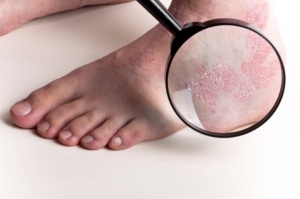Introduction
An important step in the process of recovering after a mastectomy is breast reconstruction. The healing it provides on a physical, emotional, and psychological level has the capacity to transform. The goal of this blog post is to go deeply into the field of breast reconstruction while examining the most recent developments and empirical evidence influencing after-mastectomy care.
New methods and tools are continually being developed in the field of plastic surgery, improving patient results. The same applies to breast reconstruction. Significant improvements throughout time have improved the procedure’s efficacy and accessibility. Today’s alternatives for reconstruction for women are more varied than ever, ranging from implant-based reconstruction to autologous reconstruction.
But breast reconstruction continues to advance after that. There is a strong commitment to expanding the realm of what is practical in this area. This blog post will address what the future of breast reconstruction might include while shedding light on current advancements supported by the most recent scientific evidence.
Keep reading as this piece explores the interesting realm of breast reconstruction and plastic surgery.
Understanding Breast Reconstruction
Following a mastectomy, lumpectomy, or other sort of damage, breast reconstruction is a surgical technique designed to restore the size, shape, appearance, and symmetry of the afflicted breast(s). By completing this important step in the healing process, many women’s sense of self-worth and quality of life can be restored.
One of two categories best describes the vast majority of conventional breast augmentation techniques:
Implant-based reconstruction describes breast reconstruction that makes use of silicone or saline implants. As is customary for treatment, a temporary tissue expander is first implanted, then a permanent implant.
During an autologous or “flap” reconstruction, the patient’s back, buttocks, or belly are used to create a new breast mound. This method often yields restorations that are more visually appealing and natural-looking than implant-based procedures, despite the fact that it can be more difficult.
Each of these strategies has benefits and can be applied in different situations. The elements influencing the choice between them include the patient’s health, body type, preferences, and the particulars of their cancer therapy1.
Recent years have seen improvements and new methods in breast reconstruction. Now let’s look at a few of these.
Recent Developments in Breast Reconstruction
In the ever-evolving field of plastic surgery, there have been several advancements in breast reconstruction techniques. These innovations aim to improve patient outcomes, reduce complications, and enhance aesthetic results. Here are some of the most notable recent developments:
-
Autologous Fat Transfer (AFT): This technique involves the extraction of fat from one part of the body and its injection into the breast area to recreate the breast mound. AFT can be used alone or in combination with other reconstruction methods to improve the shape and feel of the reconstructed breast2.
-
Implant-based reconstruction with acellular dermal matrix (ADM): ADM is a type of biologic mesh that can support the placement of an implant. It’s used to create a more natural-looking breast contour and reduce the risk of complications such as capsular contracture3.
-
Prepectoral breast reconstruction: This is a newer approach where the implant is placed on top of the chest muscle, rather than underneath it. This method can reduce post-operative pain and muscle distortion4.
Each of these techniques has been supported by scientific data demonstrating its effectiveness. For instance, a recent study titled “Aesthetic Evaluation of Breast Reconstruction with Autologous Fat Transfer vs. Implants” compared the aesthetic outcomes of AFT and implant-based reconstruction, providing valuable insights into these techniques5.
Comparative Analysis of Techniques
With the variety of techniques available for breast reconstruction, it’s important to understand how they compare in terms of outcomes and patient satisfaction. Recent studies have provided valuable insights into these comparisons.
One such study, titled “Aesthetic Evaluation of Breast Reconstruction with Autologous Fat Transfer vs. Implants,” compared the aesthetic outcomes of Autologous Fat Transfer (AFT) and Implant-Based Reconstruction (IBR). The study found that while both techniques were well-received, the aesthetic scores varied depending on the observer group. Plastic surgeons and breast cancer patients did not differ in their aesthetic scores between the two techniques, but laymen scored AFT patients lower than IBR patients5.
This study highlights the importance of considering patient preferences and expectations in the decision-making process. It also underscores the need for thorough patient counseling, including information on achievable aesthetic results before starting a reconstructive procedure.
Conclusion: The Future of DP Treatment and Management
Deformational plagiocephaly, while a common condition, can be a source of concern for many parents. However, recent research in the field brings hope and guidance. From the promising results of helmet therapy to the potential of early prediction of DP severity and the innovative use of deep learning technology, we are witnessing significant strides in our understanding and management of DP.
The studies we discussed today not only provide valuable insights into the treatment of DP but also pave the way for future research. They highlight the importance of early detection and intervention, the potential of technology in healthcare, and the need for accessible and effective treatment options.
While these studies represent significant progress, there is still much to learn about DP. As researchers continue to explore this condition, we can look forward to more breakthroughs that will help ensure the well-being of our little ones.
The Future of Breast Reconstruction
As advancements continue to be made in the field of plastic surgery, the future of breast reconstruction looks promising. Here are some potential future directions:
-
Stem Cell Therapy: Research is being conducted into the use of stem cells in breast reconstruction. Stem cells have the potential to regenerate tissue, which could lead to more natural-looking and feeling results6.
-
3D-Printed Breast Tissue: With the advent of 3D printing technology, there is potential for creating customized implants using a patient’s own cells. This could reduce the risk of complications and improve aesthetic outcomes7.
-
Personalized Treatment: As with many areas of medicine, a move towards more personalized treatment is likely. This would involve tailoring the reconstruction method to the individual patient’s needs, body type, and personal preferences.
-
Improved Patient Counseling: As techniques become more varied and complex, there will be an increased need for thorough patient counseling. This includes setting realistic expectations, discussing potential risks and benefits, and providing support throughout the decision-making process.
While these advancements are exciting, it’s important to remember that they are potential future developments and are currently under research and development. The most appropriate method of breast reconstruction will always depend on the individual patient’s circumstances and should be decided in consultation with a qualified plastic surgeon.
Conclusion
Despite being a common illness, deformational plagiocephaly can worry some parents. Recent findings in the area, though, offer encouragement and direction. We are seeing substantial advancements in our comprehension and treatment of DP, from the encouraging outcomes of helmet therapy to the potential for early DP severity prediction and the creative application of deep learning technologies.
The studies we covered today not only shed light on how to treat DP, but they also open up new avenues for investigation. They emphasize the value of early identification and treatment, the promise of technology in healthcare, and the demand for affordable and efficient treatment choices.
Even though these research mark a substantial advancement, there is still more to discover about DP. More discoveries that will contribute to ensuring the safety of our children are likely as researchers continue to study this issue.
For more information on the latest developments in breast reconstruction, consider these resources:
References
-
Breast Reconstruction After Mastectomy – National Cancer Institute
-
Autologous Fat Transfer for Breast Reconstruction – American Society of Plastic Surgeons
-
Acellular Dermal Matrix (ADM) and Breast Reconstruction – Breastcancer.org
-
Prepectoral Breast Reconstruction – American Society of Plastic Surgeons
-
Stem Cells in Breast Tissue, Breast Cancer, and Breast Reconstruction – NCBI




